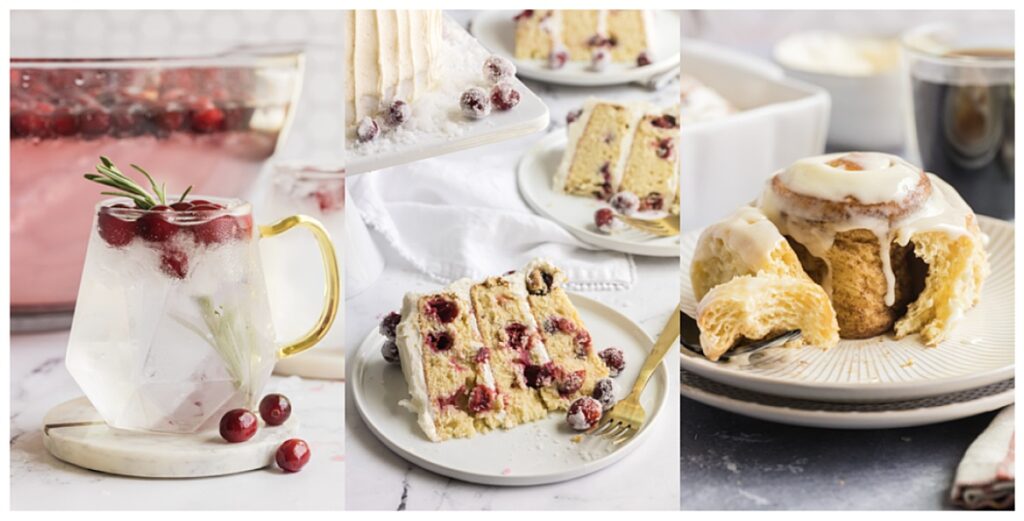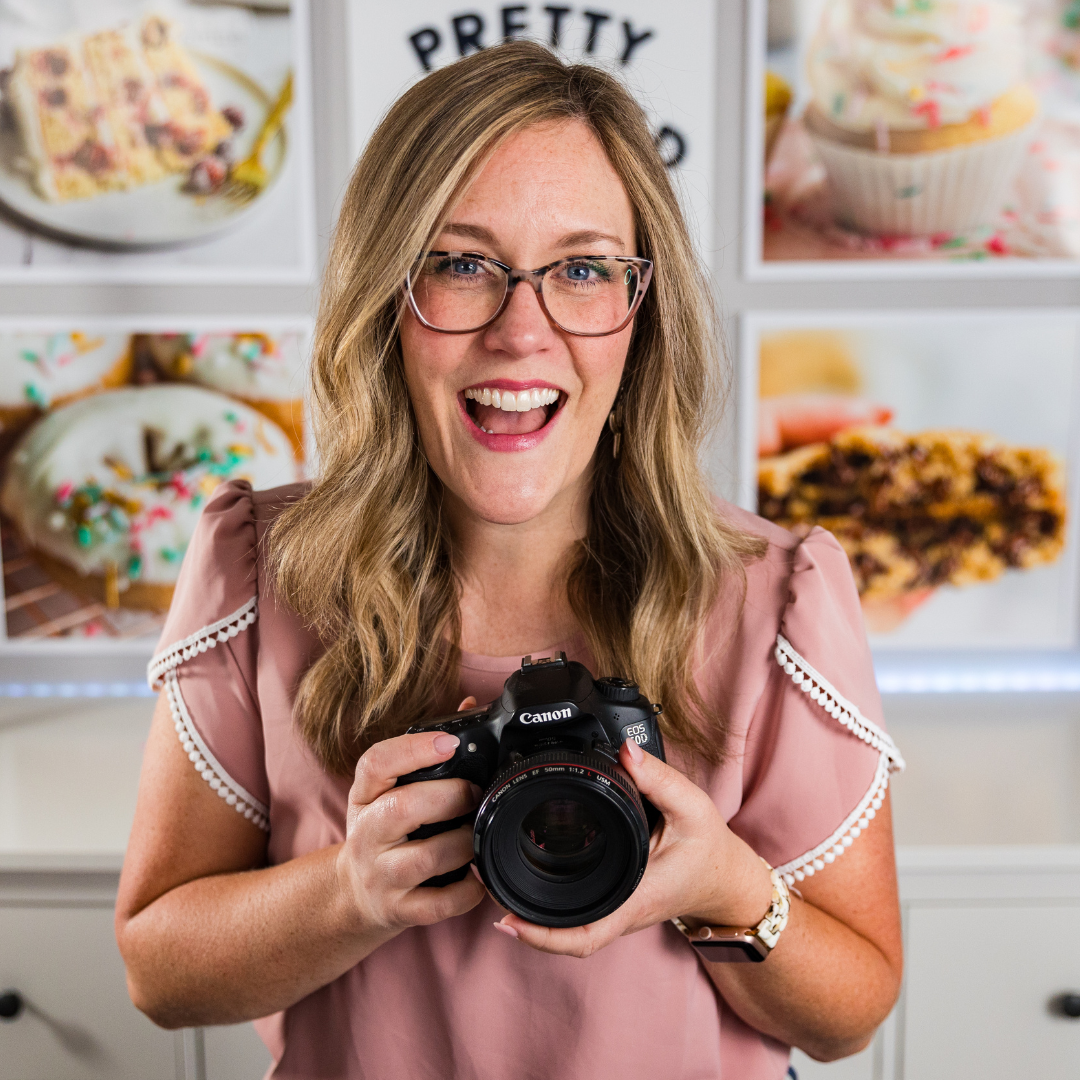make money with food photography
If you have always dreamed of being able to stay home with your kids and still help your family, YOU CAN as a food photographer for bloggers.
Free video training!

Jan 18, 2024
AI Food Photography: Is it the Future?
Should you be worried about AI food photography? Are you going to lose your job to AI? It’s all that anyone is talking about nowadays. We’re going to be replaced with computers in just a few years, right?
Nope. I mean, we cannot predict the future. Our world looks nothing like the prediction from Back to the Future. Where are our hoverboards? But that doesn’t mean we can’t make an educated guess about the world and where we’ll end up.
So, let’s talk about AI food photography.
- What is it?
- Should you use it?
- The perils of using AI.
- Where will it take the food photography industry in the future?
- How can we continue to thrive no matter what?
What is AI Food Photography?
AI is a tool that most businesses already use. Whether you use ChatGPT, Bard, MidJourney, or other platforms, they can help you produce written and visual content in just seconds.
I just asked ChatGPT, “What is AI, and should I be scared of using it?” and within five seconds, it wrote out five paragraphs. Here’s just a peek.
“AI, or artificial intelligence, refers to the development of computer systems that can perform tasks that typically require human intelligence. These tasks include things like visual perception, speech recognition, decision-making, and language translation. AI can be categorized into two types: narrow AI, which is designed for a specific task, and general AI, which would have the ability to perform any intellectual task that a human being can.
Whether or not you should be scared of using AI depends on the context and the specific application. AI technologies have the potential to bring about significant benefits, such as improved efficiency, better decision-making, and advancements in various fields…”
And when it comes to AI food photography and computer-generated visuals, the results can be seemingly just as impressive. We used Midjourney (an AI food image generator) to test out various food photos that could fit on a food blog website. Here’s what we got.

As you can see, the AI-generated food images look pretty good. If you look closely, you can definitely spot the AI qualities. The burger has pieces floating in the air, and the cheese melt is too perfect. The fruit in the yogurt bowl doesn’t sink into the yogurt in a realistic way.
The key is to be really specific, like this prompt for chia pudding: “photography food styling, macro close-up shot: Chocolate Chia Pudding on a wooden table, boho decoration, beige colors, morning lighting + shadows, kodak portra 400 –ar 4:5 –style raw”. Though the chia pudding is just a little too smooth, it’s so realistic that it could probably pass as real for most people.
Should You Use AI for Your Business?
The question is: should you use AI food photography or any other type of artificial intelligence in your business? The simple answer is yes. It has its place.
At Pretty Focused, we even use AI! AI did not write this blog (we hire writers for our blog posts and emails), but we use AI to help us write other material. Just type in a prompt in ChatGPT for social media content, and you’ll see how quick and easy it is to generate ideas for content. And who doesn’t want that?
AI is ideal when you need something fast! An AI-generated image can quickly fill in a missing picture on a blog post or add interest to a website page. And, when you have limited time and funds, this can be invaluable.
But you must remember something: you can't replace the human element!
The Perils of AI Food Photography!
AI cannot do everything. It’s a tool like anything else, so use it carefully. Let’s talk about it.
Artificial Intelligence VS Human Creativity and Skill
Let’s compare these three images below. One is AI; the other two are actual photos. Can you spot the difference? Of course! As soon as you put a computer-generated image next to a photographer's image, the imposter is easy to spot. Why is there a cheesy egg on top?

When AI creates something, there are almost always hints that it is computer-generated. AI doesn’t get the casual, human element correct. Instead, it appears stilted, salesy, random, or overly repetitive. This means that you’ll need to take the time to edit it to get the high-quality content you want.
The other problem with AI is specificity. If a food blogger gives you a brief, asking for specific designs and details, getting precisely what is required using AI could be challenging. In fact, you might spend more time on AI trying to get the background, details, and “yum factor” than if you just took the photo yourself. On top of that, AI food photography rarely provides the texture required for believability.
AI and Customer Trust
And when it comes to food blogging, AI food photography can put you in hot water with your readers. People come to food blogs because they trust they are learning to make a recipe. But if the recipe's outcome is AI-generated, it won’t match the real outcome. This hurts the relationship between the reader and the blogger. And the content becomes massively devalued and untrustworthy.
The reality is that traditional food photography requires a lot of “know-how” to do it right. After all, that’s why Pretty Focused exists. To be a food photographer, you need to understand creative briefs in all their detail and come up with a strategy to get the results you need before you even start taking photos. It can be laborious, but the results are always worth it.

AI food photography skips all those steps for expediency, which can significantly reduce your results. Can you imagine making this unicorn cake using a recipe that didn’t end with these results? You would be so disappointed, and you probably wouldn’t try any other recipes on the website.
Google’s “Helpful Content Update” Rules
And there can be even worse consequences when it comes to Google and SEO. With Google's new “helpful content update,” they have stated how important it is to have original, helpful content that follows EEAT: Experience, Expertise, Authoritativeness, and Trustworthiness.
How can a blogger look like the authority when using fake photos? It defeats the purpose of Google's HCU. It's a big reason why Google came up with the update. To keep people from sharing spammy, shallow, and unhelpful content.
Google cares about accuracy as much as bloggers do, so AI food photography images that include random ingredients, look bland, or feel fake won’t do you any favors on search engine ranking.
On top of that, internet sleuths can find anything and everything. Just think of how good Swifties are at solving mysteries! Can you imagine the embarrassment for a blogger if a reader used Google to reverse search for a recipe image and found out it was AI-generated?
What’s the Future of AI Food Photography?

So the last questions are: will AI food photography get better with time, and should you be worried? Maybe. But we can never predict the future. And, oftentimes, when one item’s value starts to dilute because there’s too much of it (AI content), the value of its competitor (real photography) increases.
Let's look at the history of technology over the past few decades:
When digital cameras came out, did the film industry see a hit? Sure, some photographers quit, and some adapted to the times. Still today, many photographers use film successfully. The key is embracing new and creative ways.
And when cell phone cameras were introduced, people said, “Oh, everyone is a photographer now. That career is dead!” Yet there’s still a massive and growing need for traditional photographers. People still book photographers for family photos, maternity, newborn, and weddings. Why? Because everyone is NOT a photographer! Too many people still manage to take crooked photos with dirty lenses in horribly split lighting.
And no, just because your phone camera has an incredible number of pixels doesn’t mean it replaces skill. Plus, there’s more to pixels than just one single number. Pixel pitch and pixel density are also important, and in that case, phones don't stand a chance against professional cameras. Not to mention the fact that the image ratio from a phone is different, which poses a problem when printing images.
Trust me, just because someone can hit a shutter button doesn't make them a photographer!
Bet on Yourself Over Artificial Intelligence

At the end of the day, while we believe there’s a place for AI food photography and content creation, we think the surer bet is to bet on yourself. There’s only one you, and what you can do, no one else can—not even AI. The key is to be alert and ready to adapt and change with the times.
As business owners and food photographers, we don't want to put our heads in the sand and ignore the possibilities. Dealing with new technology is inevitable. It’s how you make it work for you that makes you a successful business owner.
If you join Pretty Focused, you'll be part of a community that navigates any changes that come—together. We keep our ears to the ground and connect with bloggers to understand and adapt to their needs. We're in this for the long haul, no matter what AI may throw our way. Congratulations, and welcome to the club!

Pretty Focused Founder | I’m a wife, educator, photographer and homeschool mom. I created my own dream job working from home and now teach others how to turn their passions into creative businesses.
PRIVACY / disclaimer / accessibility / Code of conduct / Earnings Disclaimer / Be an Affiliate
melodee lynn photography llc - Copyright 2023
www. PRETTYFOCUSED.COM / PSALM 90:17
melodee lynn photography llc
Copyright 2023
PRETTYFOCUSED.COM
PRIVACY / disclaimer / accessibility Code of conduct / Earnings Disclaimer
Be an Affiliate / PSALM 90:17